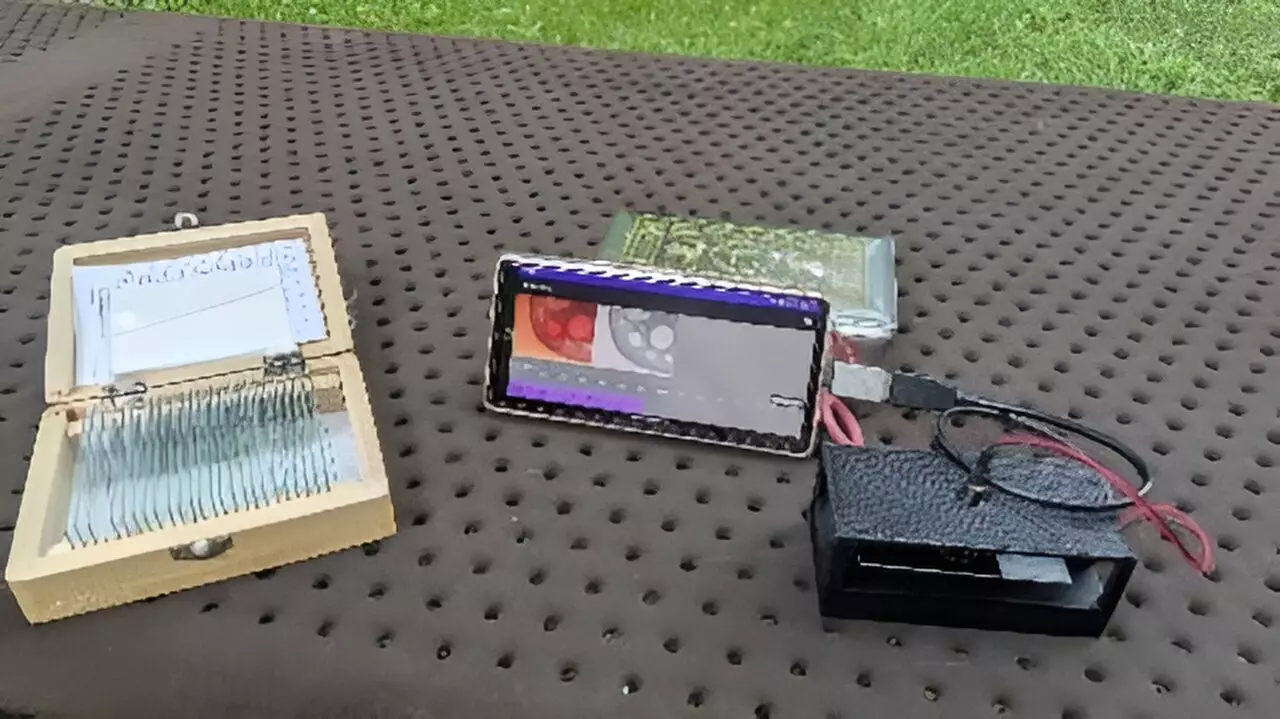In an age increasingly defined by technological innovations, the advent of a smartphone-based digital holographic microscope marks a pivotal moment for both microscopy and broader scientific applications. Researchers, led by Yuki Nagahama from the Tokyo University of Agriculture and Technology, are transforming an expensive and complex technology into an accessible tool that has the potential to democratize science and education. This groundbreaking device not only promises to enhance precision in three-dimensional (3D) measurements of microscopic samples but also opens doors to a myriad of applications in resource-limited environments, from healthcare diagnostics to educational settings.
Traditional holographic microscopes have been bogged down by their reliance on bulky optical equipment and personal computers that render them inconvenient for many applications. By innovating a portable and economical version that utilizes a simple optical system created via 3D printing and performs calculations on a smartphone, researchers are offering a solution that could broaden the accessibility of microscopic observation in everyday settings. The new microscope embodies the convergence of hi-tech and simplicity, allowing for the reconstruction of complex holograms directly on a smartphone, making it lightweight and user-friendly.
High-Powered Microscopy at Your Fingertips
The smartphone-based digital holographic microscope does not merely simplify existing technologies; it enhances user experience with functionalities unimaginable in traditional systems. Users can intuitively manipulate holographic images through touch, utilizing pinch gestures to zoom in and out, which is particularly useful for educational purposes. Such interactivity can engage students more effectively, allowing them to visualize and comprehend biological structures up close, whether in classroom environments or at home.
This development is particularly timely in the context of global health challenges. The ability to provide real-time diagnostic capabilities in underserved regions could have profound impacts on public health initiatives. For example, the potential to diagnose sickle cell disease or other conditions in developing nations could pave the way for early interventions and improved patient outcomes, ultimately transforming lives. The accessibility of this technology breaks down barriers that have traditionally hindered access to advanced diagnostic tools.
The Science Behind the Innovation
How does this innovative microscope work? At its core, the microscope employs the principles of holography to capture interference patterns created when light interacts with a sample. The magic lies in digitally reconstructing these holograms, yielding 3D images that can reveal intricate details beneath the surface of biological specimens. Unlike previous iterations of smartphone-based holography that either relied on external devices for image processing or fell short in real-time capabilities, this new version benefits from the application of band-limited double-step Fresnel diffraction. This advanced methodological approach optimizes the computational demands, allowing fast image processing without compromising the quality of the resultant 3D visualizations.
While the technological enhancements are compelling, the implications of such innovations cannot be overstated. The light housing created through 3D printing not only weighs less but also signals a shift towards sustainability and customization in scientific tools. Researchers are no longer constrained by conventional methods and materials.
A Step Toward the Future: Imagining the Next Phase
Future directions for this research are particularly exciting. Integrating machine learning techniques presents a pathway to further improve the quality of images generated by the smartphone-based microscope. While the apparatus already demonstrates significant promise, concerns such as the emergence of unintended images during hologram reconstruction linger. Utilizing deep learning frameworks could provide solutions by training models to identify and eliminate these artifacts, paving the way for even clearer and more reliable results.
Moreover, the adaptation of such technology can catalyze a movement in science education; students can engage directly with their environments, conducting experiments and analyses that were once limited to well-resourced laboratories. The enhanced portability and low cost open new doors for scientific inquiry and investigation, facilitating greater curiosity and learning.
Empowering Tomorrow’s Innovators
The smartphone-based holographic microscope is more than just a technological advancement; it symbolizes the shift toward inclusivity in science and education. As industries evolve, so too must the tools we use to understand the world around us. By integrating advanced microscopy into everyday devices, we empower students, researchers, and healthcare workers across varying fields to unlock new potential and drive positive change. The implications of this work remind us that technological advancements, when grounded in accessibility and community needs, can transform our collective journey into a sustainable future full of possibility.


Leave a Reply